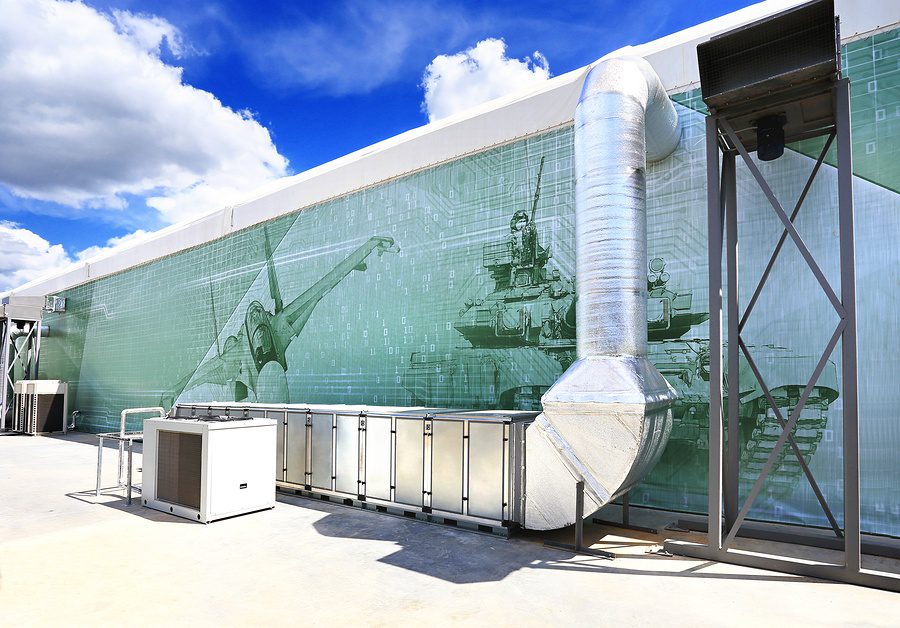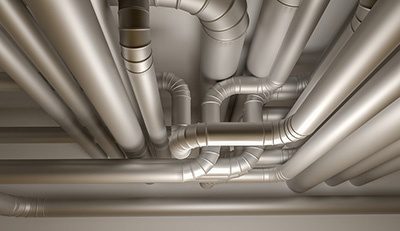Breaking Down the Basics of Ductwork Fabrication
Finding the Right Ductwork Manufacturer
 There is a significant degree of importance placed on the ductwork system of any commercial or industrial property. The fabrication and installation of this type of system must closely adhere to all industry standards in order to ensure complete structural and functional dependability. The ductwork is responsible for conducting huge amounts of heated air and excessive dust throughout the building. These two components bring potential risks that must be considered.
There is a significant degree of importance placed on the ductwork system of any commercial or industrial property. The fabrication and installation of this type of system must closely adhere to all industry standards in order to ensure complete structural and functional dependability. The ductwork is responsible for conducting huge amounts of heated air and excessive dust throughout the building. These two components bring potential risks that must be considered.
As you are speaking with multiple fabricators about your ductwork needs, be sure to consider a few factors in the process.
- How does the fabricator configure the support system?
- Will the supports effectively hold up under excessive heat and dust?
- What region of the country are you in? In some regions that see significant amounts of snow annually, large quantities of snow can build up on external ductwork. Is this extra weight accounted for?
The Proper Support System Makes All The Difference
The stability, reliability and success of a ductwork system rests on the support system holding it in place. If any portion of the support system fails, the structural integrity of the entire ductwork system could be at risk. Varying supports include:
- Fixed supports- these supports are rigid and prevent any lateral movement of the ductwork. Fixed supports keep the ductwork in place.
- Link Supports- these are utilized to connect the framework to the foundation
- Guide Supports- sometimes, ductwork needs to have some clearance in order to expand due to excessive heating. These guides will keep ducts from shifting from side to side, but will allow for such expansion.
- Rod Supports- Rod supports are the most flexible supports used for ductwork. They are easy to design and used on longer support frames.
- Sliding Supports- In some cases, processed ductwork requires limited mobility. These sliding supports work in conjunction with a Teflon foundation that must be distanced from the ductwork to prevent any sliding surface from being compromised by the heat.
The key to remember is that a complete ductwork system exists under great stress and that the joints are the most vulnerable under pressure. The wrong configuration of supports could mean the failure of the whole system.
Fabrication and Installation Isn’t Complete Without Quality Assurance You Can Trust
 If you want to avoid future pitfalls look for a commitment to quality manufacturing. An expert fabricator ensures precision measurements and consistent dimensions throughout all ductwork pipes. Close attention must be paid to the individual design specifications that clients may have. Quality assurance means checking and double-checking the joints, ensuring that the ducts are resistant to corrosion, and that heat and weather conditions won’t compromise the structural integrity of the system.
If you want to avoid future pitfalls look for a commitment to quality manufacturing. An expert fabricator ensures precision measurements and consistent dimensions throughout all ductwork pipes. Close attention must be paid to the individual design specifications that clients may have. Quality assurance means checking and double-checking the joints, ensuring that the ducts are resistant to corrosion, and that heat and weather conditions won’t compromise the structural integrity of the system.
Avoid a Potential Disaster
Poor planning, improper configurations, and questionable welding can all contribute to a ductwork disaster. Rust and corrosion could cause supports or joints to fail; ducts can implode when suction pressure isn’t accounted for sufficiently. If the ductwork collapses, any damages could result in issues like safety liabilities, property damage and production downtime.
Finding the Right Solution
Swanton Welding and Machining has been providing high quality, innovative solutions for metal fabrication since 1956. Our skills includes emergency repair, maintenance programs, and custom metal manufacturing of any complexity. No matter the job, Swanton Welding has the tools and capabilities necessary to complete the work with ease. Call 419-826-4816 today for a free quote and learn more about our full ductwork fabrication capabilities.
